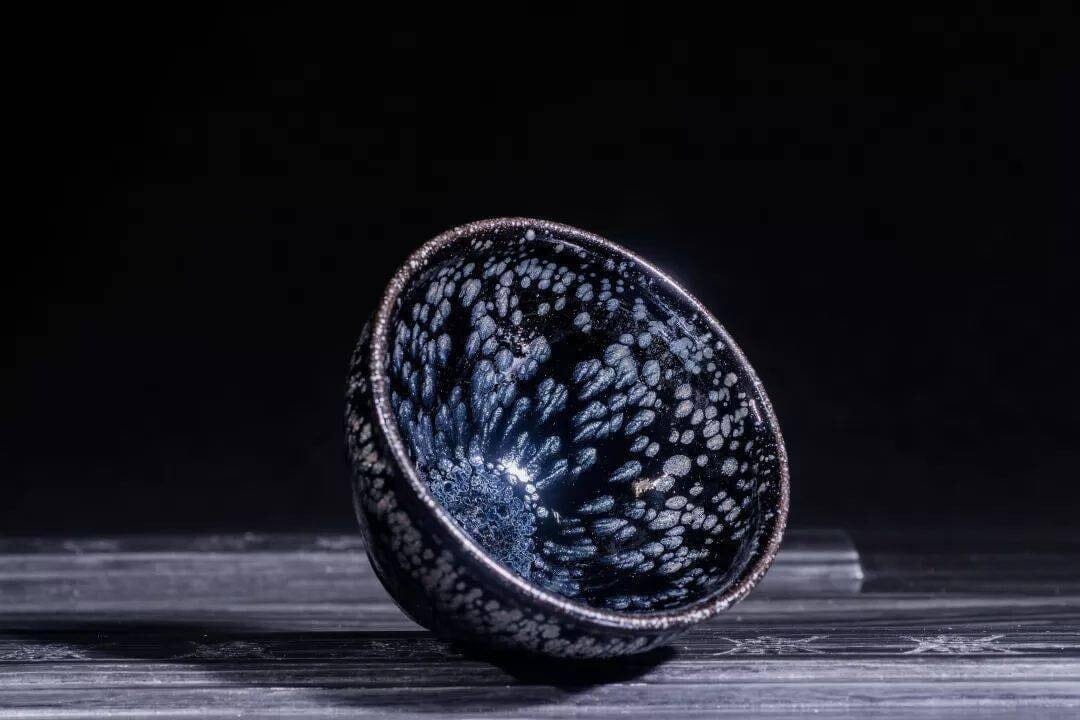Black porcelain, also known as tenmoku porcelain, is an ancient porcelain-making technique. It is one of the common glaze colors used for everyday utensils and is a type of porcelain that is fired with a black high-temperature glaze. Black porcelain has a unique aesthetic feature called "the beauty of mysterious darkness".

- Pursuit of ultimate tranquility.
Although it belongs to silence in enlightenment, it is not dead silence. Random sorrow and resentment emerge, but before they touch the heart, the mind follows all things, and all things follow the mind. The object and the subject silently understand each other in this quiet leap.
Traditional Chinese aesthetics has its own philosophical views. In the process of achieving aesthetic contemplation, it emphasizes complete, pure, and simple observation to enable the viewer to achieve spiritual transcendence and thereby cultivate an aesthetic mentality that is as pure as ice and snow, and as serene as clear water.
The completion of this psychological process is an instantaneous transformation, which almost occurs simultaneously with the aesthetic contemplation activity. The transformation from black to white, from depth to clarity, from the moment to eternity, are all instantaneous transformations.
In traditional Chinese art, the perfect combination of the instantaneous and the eternal can be seen in the enigmatic black porcelain, making it the best example.
- The complementarity of aesthetic connotations.
In the long history of ceramic development in China, black porcelain was often forgotten if it had not been given special attention during the Song Dynasty's tea culture, which emphasized the importance of the "Black Way". For a long time, black porcelain was not favored by people.
Before the Tang Dynasty, black porcelain was mainly expressed in pure black. However, during the Song Dynasty, the complementarity between the aesthetic connotations of tea culture and black porcelain gave rise to the unique and enigmatic artistic charm of black porcelain.
As a result, black porcelain in China has become infused with culture and aesthetics, showcasing its unique artistic charm of enigmatic emptiness.
- Aesthetic interpretation of enigmatic beauty.
The aesthetic awareness of "enigmatic beauty" originally referred to a type of beauty associated with disappointment and tragedy. As it developed into a conscious stage, it began to pursue a vague sense of feeling and a half-hidden, half-exposed loneliness that lies behind the object, striving toward a beauty that is simple, unadorned, and imperfect in a way that is almost unsatisfactory.
This kind of perfection within imperfection is what makes it highly artistic and at the same time, the most pure and unpretentious.
The enigmatic realm of black porcelain shares similarities with the aesthetic themes of "wabi" and "sabi" in the Japanese world of tea.
These themes include a sense of leisure, relaxation, antiquity, and tranquility, displaying the aesthetic significance of a simple and quiet beauty. It can also be said that it is about maintaining inner fulfillment in the midst of poverty and dissatisfaction, transcending worldly concerns, and preserving an elegant state of mind even when life is not going well.
- The characteristics of black porcelain.
Black porcelain is jet black and translucent, ancient and solemn, and calm and simple, which is in line with the aesthetic connotations of the Song Dynasty's tea culture that emphasizes the beauty of tea against the black background.
In terms of appearance and aesthetics, the black porcelain teacups of Jizhou Kiln and Tenmoku Kiln are highly favored in tea competitions due to their combination of literary sentiment and internal and external beauty, as well as their hidden emotions and visible quality.
- The composition and color of black glaze.
Black glaze appeared in the late Eastern Han Dynasty and is an important branch of iron-based ceramic glaze, holding a significant place in the history of Chinese ceramics.
One important reason for the widespread popularity of black glaze in China is the easy availability of raw materials. The clay in many ceramics-producing regions in China has a high iron content, which means that both the body and glaze of the ceramics contain iron components.
Clay with a high iron content is considered low-grade material and is easily found on the ground.
In the early days, the black glaze layer was relatively thin. After the Northern Song Dynasty, the glaze layer of black porcelain gradually became thicker, with the thickest layer reaching about 1 millimeter.
Most black glazes actually have a brown or brownish-yellow hue rather than true black, which is particularly noticeable in areas where the glaze layer is thin.
The deep, tranquil, and solemn color of black glaze matched well with the popular tea-drinking and tea-fighting culture of the time, leading to its flourishing development during the Song Dynasty.
During the Song Dynasty, people innovated various decorative techniques on the surface of black glaze, creating unique styles such as "oil drop", "rabbit hair", "tortoiseshell", "paper-cutting", "leaf-shaped", and "glazed painting". These techniques elevated the firing process and artistic level of black glaze to the highest point in history.









Share:
Tenmoku bowl patterns: oil droplets and rabbit hair used to explain formation
Who determines the value of Tenmoku bowls?